Flight Buzz
Saudi Arabia Sets Revolutionary Aviation Benchmarks During Hajj 2025, Efficiently Handling Over 140,000 Flights in a Brilliant Display of Operational Mastery
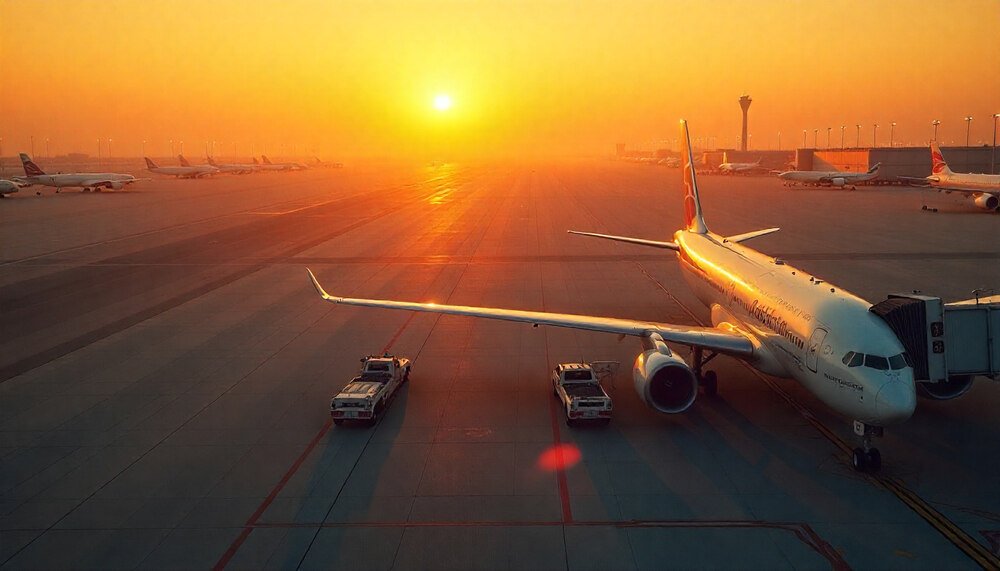
Published on
August 9, 2025 |
Saudi Arabia has achieved an extraordinary feat during Hajj 2025, shattering global air traffic records by managing over 140,000 flights, marking a groundbreaking 8% increase from the previous year. The Kingdom orchestrated a seamless flow of air traffic, effectively handling a monumental number of domestic and international flights, underscoring its dominance in global aviation. This remarkable achievement highlights Saudi Arabia’s unmatched precision and operational excellence in facilitating one of the largest annual religious events in the world. With a record 2,338 air movements in a single day, the Kingdom has set new standards in air traffic management, solidifying its leadership as a vital global aviation hub. Through strategic planning and cutting-edge technology, Saudi Arabia has demonstrated its unwavering commitment to ensuring a safe, smooth, and efficient pilgrimage experience for millions of Muslims worldwide.
Saudi Arabia achieved a historic milestone during the 2025 Hajj season, successfully managing over 140,000 air movements, marking an 8% increase compared to the previous year. This remarkable feat highlights the Kingdom’s commitment to streamlining logistics and enhancing air traffic operations, ensuring a smooth pilgrimage experience for millions of Muslims worldwide.
A Surge in Air Traffic
The 2025 Hajj season (Hajj 1446 AH) witnessed record-breaking air traffic, with more than 140,000 flights handled by Saudi Arabia’s airspace. These flights consisted of both domestic and international air movements, underlining the Kingdom’s essential role in facilitating the pilgrimage. The Saudi Air Navigation Services (SANS) coordinated air traffic for 213 airlines, further reinforcing Saudi Arabia’s global connectivity and importance as a key aviation hub for religious tourism.
Key Highlights of Air Traffic Operations
- Single-Day Peak: On Dhu Al-Hijjah 2, 1446 AH, Saudi Arabia achieved a new record for air traffic, with 2,338 aircraft movements in a single day. This marked a 4% increase over the same day in 2024, showcasing the Kingdom’s growing air traffic capacity.
- Arrival and Departure Phases:
- Arrival Phase: During the period from Dhu Al-Qidah 1 to Dhu Al-Hijjah 8, there were 74,902 air movements, representing a 15% increase over the previous year. This reflects a significant surge in the number of incoming flights as millions of pilgrims arrived in the Kingdom for Hajj.
- Departure Phase: From Dhu Al-Hijjah 23 to Muharram 15, Saudi Arabia recorded 66,072 air movements during the departure phase, showing a 2% increase compared to 2024.
These figures demonstrate the Kingdom’s ability to handle substantial air traffic volume, with arrivals seeing a particularly impressive increase in comparison to the previous year.
Advanced Operational Strategies and Technology
The success of Saudi Arabia’s air traffic management during Hajj 2025 can be attributed to advanced technological infrastructure and highly skilled personnel. The Saudi Air Navigation Services company (SANS) deployed sophisticated air traffic management systems, ensuring seamless operations despite the high volume of air movements. This technological infrastructure was paired with highly trained air traffic controllers, engineers, and maintenance teams, all working together to ensure the safety and efficiency of each flight.
Furthermore, Saudi Arabia’s airspace management allowed for smooth and coordinated air traffic flows across all major airports in the Kingdom, facilitating the swift and safe arrival and departure of millions of pilgrims from various parts of the globe.
Saudi Arabia’s Growing Role in Global Aviation
The record air traffic numbers during the Hajj season also reflect Saudi Arabia’s growing role in global aviation. By coordinating with 213 international airlines, the Kingdom further established itself as a central hub for international air travel. This broad international participation underscores Saudi Arabia’s increasing influence in global aviation, making it a key gateway for pilgrims from around the world.
As the Kingdom’s aviation infrastructure continues to improve, Saudi Arabia’s connectivity to global airlines grows stronger, expanding its reach as a leading air transport hub. The Kingdom’s strategic location between continents also plays a pivotal role in facilitating smooth air traffic operations, benefiting both religious pilgrims and international travelers.
Ensuring a Seamless Pilgrimage Experience
At its core, the success of Saudi Arabia’s air traffic management during Hajj 2025 is driven by the Kingdom’s commitment to providing a safe, smooth, and efficient pilgrimage experience for Muslims worldwide. The 140,000 flights, including the record-breaking 2,338 aircraft movements in a single day, demonstrate Saudi Arabia’s preparedness and capacity to handle large-scale religious events.
The operational excellence displayed during the Hajj season not only benefits the logistics of the pilgrimage but also contributes to the spiritual journey of millions. The efficient air traffic flow ensures that pilgrims can focus on their religious duties without concerns about travel-related disruptions.
Looking Ahead: Preparing for Future Hajj Seasons
The remarkable success of Hajj 2025 sets a new benchmark for the Kingdom in terms of air traffic management. As Saudi Arabia continues to modernize its air navigation systems and infrastructure, it is poised to handle even greater volumes of traffic in future seasons.
The strategic role of Saudi Arabia in global air traffic will continue to grow as the Kingdom enhances its international partnerships with airlines and expands its technological capabilities. With future Hajj seasons expected to draw even more pilgrims, Saudi Arabia’s ability to manage air traffic efficiently will be crucial to ensuring the safety and success of the pilgrimage.
In conclusion, Saudi Arabia’s achievement in handling over 140,000 flights during Hajj 2025 not only showcases its operational excellence but also underscores the Kingdom’s importance as a global hub for air travel. The continued development of Saudi Arabia’s aviation infrastructure will only further cement its position as a leader in religious tourism and international air connectivity.
Flight Buzz
Delta Air Lines Cancels 14 New Flights Across the US, Japan, Italy, UK, Brazil, South Korea, China, and Singapore, Causing Major Travel Disruption
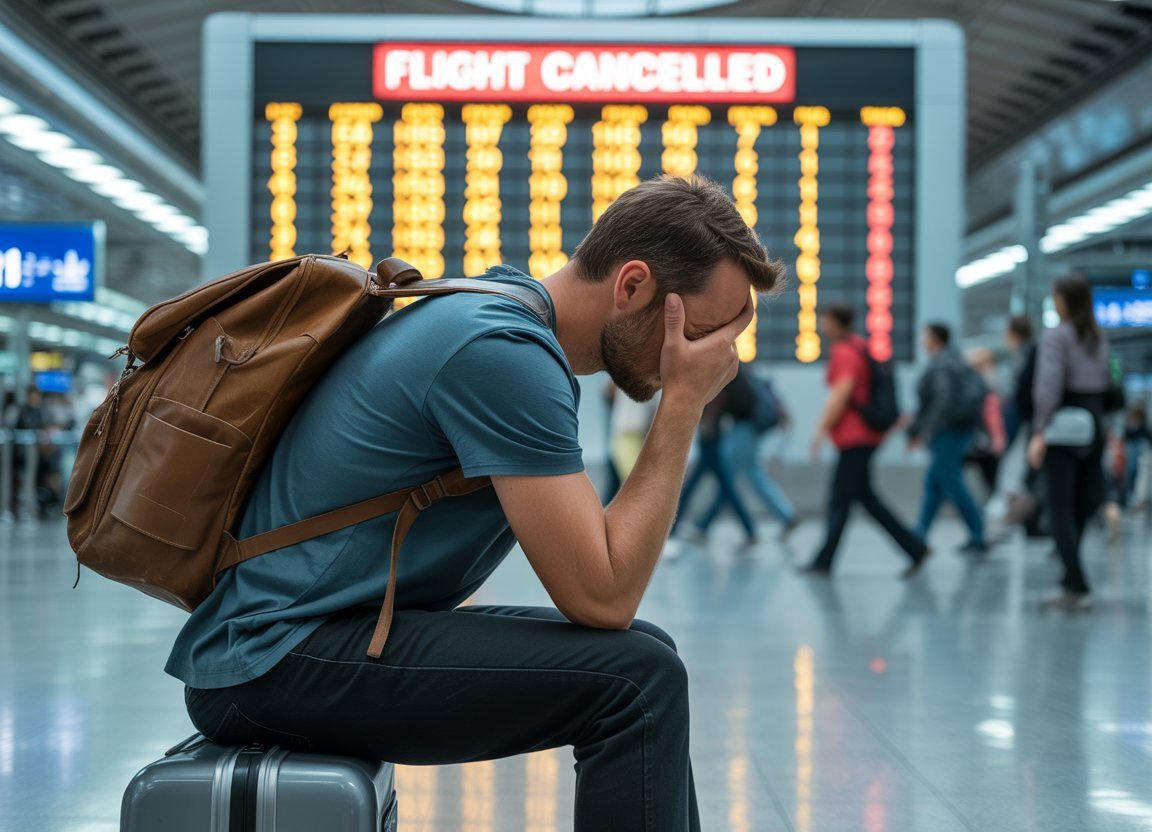
Published on
August 11, 2025 |
Causing major travel disruption, Delta Air Lines cancels 14 new flights across the US, Japan, Italy, UK, Brazil, South Korea, China, and Singapore. The airline attributed the widespread problems, which began creating a ripple effect of delays and passenger frustration on Saturday and have intensified into Monday, to significant “operational challenges.” Beyond these outright cancellations impacting global hubs on four continents, the issues have cascaded through the carrier’s network, resulting in an additional 277 delayed flights, a figure representing a staggering 7% of its tracked operations during this period.
The effects of this disruption have been felt profoundly, from families trying to return from European holidays to executives on critical business trips to Asia. The problems underscore the fragility of global airline networks in the current climate, where even minor issues can cascade into international meltdowns.
A Global Problem by the Numbers
While the cancellation of 14 flights may seem small relative to Delta’s thousands of daily operations, the strategic importance of the affected routes magnifies their impact. These were not minor regional hops but largely long-haul international flights that serve as critical arteries for global commerce and tourism. Compounding the issue, a staggering 277 additional flights were hit with significant delays, representing 7% of the carrier’s tracked operations during this period. A delay rate of this magnitude can paralyze an airline’s schedule, causing crew members and aircraft to be out of position for their next assignments, leading to further cancellations and delays down the line.
Trans-Atlantic Turmoil: Europe and South America Hit Hard
The highly profitable and competitive trans-atlantic corridor saw some of the most significant impacts. These routes are the backbone of summer tourism and business travel between the United States, the UK, and continental Europe. The disruption also extended to vital links with South America. Affected flights include:
- Flights to/from Italy: DAL231 (Airbus A333) from Rome (FCO) to New York (JFK); DAL289 and DAL9889 (Boeing 763) from Venice (VCE) to New York (JFK).
- Flights to/from the UK: DAL62 (Boeing 763) from New York (JFK) to London Gatwick (LGW) and its return flight, DAL63.
- Flights to/from Brazil: DAL226 (Airbus A339) from São Paulo (GRU) to New York (JFK) and its counterpart, DAL227.
Pacific Pain: Asian Network Sees Widespread Interruptions
Delta’s extensive trans-pacific network, which involves complex logistics and ultra-long-haul flights, experienced severe interruptions. Disruptions here can take longer to resolve due to the vast distances and time differences involved. Major hubs in Japan, South Korea, China, and Singapore were all affected.
- Flights to/from Japan & South Korea: Multiple services connecting Atlanta (KATL), Detroit (KDTW), Minneapolis (KMSP), and Salt Lake City (KSLC) with Tokyo (HND) and Seoul (ICN) were impacted, including flights DAL294, DAL120, DAL158, DAL188, DAL170, and DAL172, primarily operated by the Airbus A359.
- Flights to/from China & Singapore: The disruption touched routes to Shanghai (PVG) from Honolulu (PHNL) and a unique long-haul service from Seattle (KSEA) to Singapore’s Paya Lebar Air Base (QPG), flown by an Airbus A359.
Chaos at Home: US Domestic Routes Affected
Disruptions at Delta’s fortress hub, Hartsfield-Jackson Atlanta International (KATL), and other key US airports like New York-JFK sent shockwaves through the domestic system.
- Key Domestic Links: Flights connecting major hubs like Atlanta, Seattle (KSEA), Boston (KBOS), and Detroit (KDTW) were affected, including DAL9960, DAL9969, and DAL9964.
- Leisure & Regional Routes: Services to leisure destinations like Palm Beach (KPBI) and Honolulu (PHNL), as well as regional routes like Melbourne, Florida (KMLB) to New York’s LaGuardia (KLGA), were also impacted.
Delta Air Lines is causing a major travel disruption across its global network due to “operational challenges.” The issues have resulted in 14 flight cancellations and 277 delays, impacting routes in the USA, Japan, Italy, and beyond.
An Industry Under Strain
These challenges at Delta are not occurring in a vacuum. The global aviation industry continues to face significant headwinds in 2025. Persistent shortages of pilots and maintenance technicians, combined with aging air traffic control infrastructure and unpredictable supply chain issues, have put all major carriers under immense pressure. “Operational challenges” often serves as a catch-all for these deeper, industry-wide problems that leave airlines with little buffer to handle unexpected events.
For the thousands of affected passengers, the situation has meant frustration, long waits on customer service lines, and the difficult task of rebooking on already full flights. Delta has advised all customers with upcoming reservations to proactively check their flight status via the Fly Delta app or the airline’s website before heading to the airport. The airline stated it is working to re-accommodate travelers and get its schedule back on track, but full recovery from a disruption of this magnitude could take several days.
Flight Buzz
Flight Disruptions: 20+ Air China Flights Canceled, Major Routes In Chengdu, Beijing, Guangzhou, Shenzhen Affected
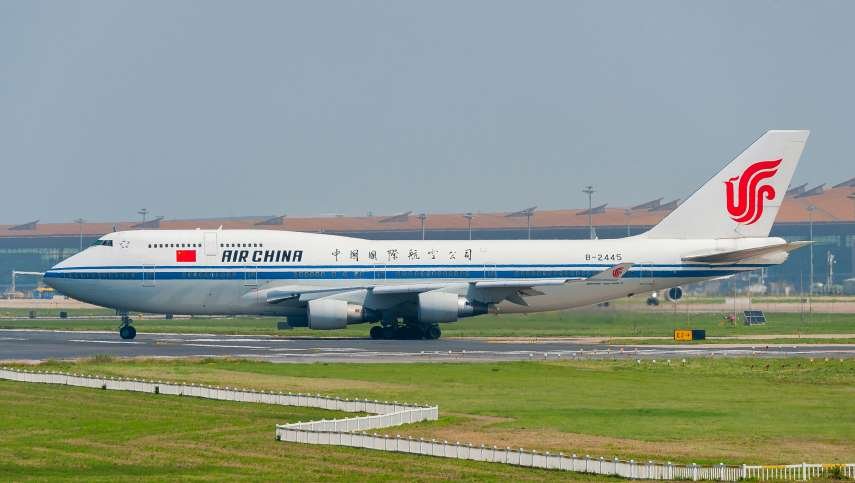
Published on
August 10, 2025 |
On Sunday, Air China announced the cancellation of a number of flights, interrupting travel plans for passengers flying between major cities like Chengdu, Beijing, Guangzhou, and Shenzhen. The disruptions affected key domestic routes with a high volume of flights operating during the morning to late evening.
The impact of these disruptions is being felt by travelers to and from Chengdu Shuangliu International, Beijing Capital International, Guangzhou Baiyun International, and Shenzhen Bao’an International. Air China’s network across China is extensive, and these sudden changes to the flight schedule pose challenges for passengers.
The issue continues to underscore the delicate nature of an airline’s flight schedule—especially during busy travel windows—and calls into question the airline’s ability to respond to unanticipated difficulties.
Flight Cancellations for Air China
The cancellations from Air China impacted several prestigious routes, and for Air China’s passengers, getting to their destinations became complicated. Here, according to government reports, is a list of some of the notable cancellations for Sunday:
The flights CCA4407 and CCA4408 were from and to Chengdu Shuangliu International CTU and Qamdo Bangda BPX, with departure and arrival times of 06:45 and 09:05 AM CST, respectively.
CCA1380 from Guangzhou Baiyun International to Beijing Capital International is also scheduled for 09:25 AM CST
CCA4413 from Chengdu Shuangliu International to Kunming Changshui International, departing at 11:05 CST.
CCA4317 departing from Chengdu Shuangliu International to Guangzhou Baiyun International at 12:05 CST.
CCA1341 from Beijing Capital to Shenzhen Bao’an at 12:10.
CCA1517 from Beijing Capital to Shanghai Hongqiao at 01:40.
CCA4414 from Kunming to Chengdu at 14:00.
CCA1327 from Beijing Capital to Guangzhou at 14:05.
CCA1397 from Beijing Capital to Shenzhen at 14:10.
CCA1718 from Beijing Capital to Hangzhou at 14:40.
CCA4318: Guangzhou Baiyun International (CAN) to Chengdu Shuangliu International (CTU) – 04:05 PM CST
CCA1342: Shenzhen Bao’an International (SZX) to Beijing Capital International (PEK) – 05:10 PM CST
CCA4323: Chengdu Shuangliu International (CTU) to Shenzhen Bao’an International (SZX) – 05:40 PM CST
CCA1518: Shanghai Hongqiao International (SHA) to Beijing Capital International (PEK) – 05:40 PM CST
CCA1723: Hangzhou Xiaoshan International (HGH) to Beijing Capital International (PEK) – 06:10 PM CST
CCA1328: Guangzhou Baiyun International (CAN) to Beijing Capital International (PEK) – 06:50 PM CST
CCA1398: Shenzhen Bao’an International (SZX) to Beijing Capital International (PEK) – 07:10 PM CST
CCA2768: Yiwu (YIW) to Chengdu Tianfu International (TFU) – 08:40 PM CST
CCA4324: Shenzhen Bao’an International (SZX) to Chengdu Shuangliu International (CTU) – 09:40 PM CST
Causes of the Disruption
Although the reason for the cancellations remains unclear, there is a chance it could be linked to the weather, technical difficulties, or delays in the operations. As a result of the size of the domestic network that Air China has, the cancellations create a chain reaction for the many passengers who use these flights to travel to international or regional hubs.
Travelers are advised to contact the airline office for information concerning the rescheduled flights as the situation continues to evolve. Many are now looking for other ways to travel, and for some, trains and buses are a viable alternative.
Passenger and Local Airport Impact
For most travelers, these cancellations are laden with a lot of uncertainty and frustration. Because of the huge volume of passengers being stranded in various airports, local governments and airport authorities are in the process of providing alternative solutions. With the number of people impacted, it is proving to be a major logistical nightmare.
Airports that are typically busy with passengers during peak hours, such as Chendu Shuangliu, Beijing Capital, Guangzhou Baiyun, and Shenzhen Bao’an, are receiving a high volume of inquiries from travelers trying to book new flights or get information on the status of their flights. For some, the process of obtaining alternative flights could take hours or even days.
What is Air China Doing in Response
Air China has committed to helping passengers affected by the cancellations by providing various rebooking options and refunds where such flights are canceled. Passengers who book their tickets from third parties are advised to reach out to their agents for further help.
Moreover, the airline emphasized that it is trying to fully restore operations and deal with the aftermath of any disruptions as soon as possible. The airline is trying to restore the intended operations and cut down any schedule imbalances due to this occurrence.
More About the Consequences for Domestic Flights
The issue of this cancellation has highlighted the weaknesses that exist in the infrastructure for domestic air travel within the country. The expansion of the technology and the travel infrastructure in China has made air travel one of the most affordable, and hence has made the airline sector of the country to grow.
The case with Air China shows that there is ample room for improvement with regard to air travel efficiency and fulfillment of passenger expectations in the aviation industry. The dependence of the airline sector, as well as the travel sector, is on the service that is offered to the passengers through the airlines.
Final Remarks
Therefore, the flight cancellations have affected passengers and travelers who intended to travel to Chengdu, Beijing, Guangzhou, and Shenzhen. There are ongoing worries that in the future, incidents such as this one will occur, which will only flag the unreliability and the chaos that might be in the aviation sector.
With travelers modifying their plans, there is a glimmer of hope that normal operations will resume soon. For now, travelers should pay attention to information given by the airline and the local airports to avoid unnecessary delays.
Flight Buzz
Is Tuesday at 4 a.m. really the best time to book flights? Luxair says no to know about air travel
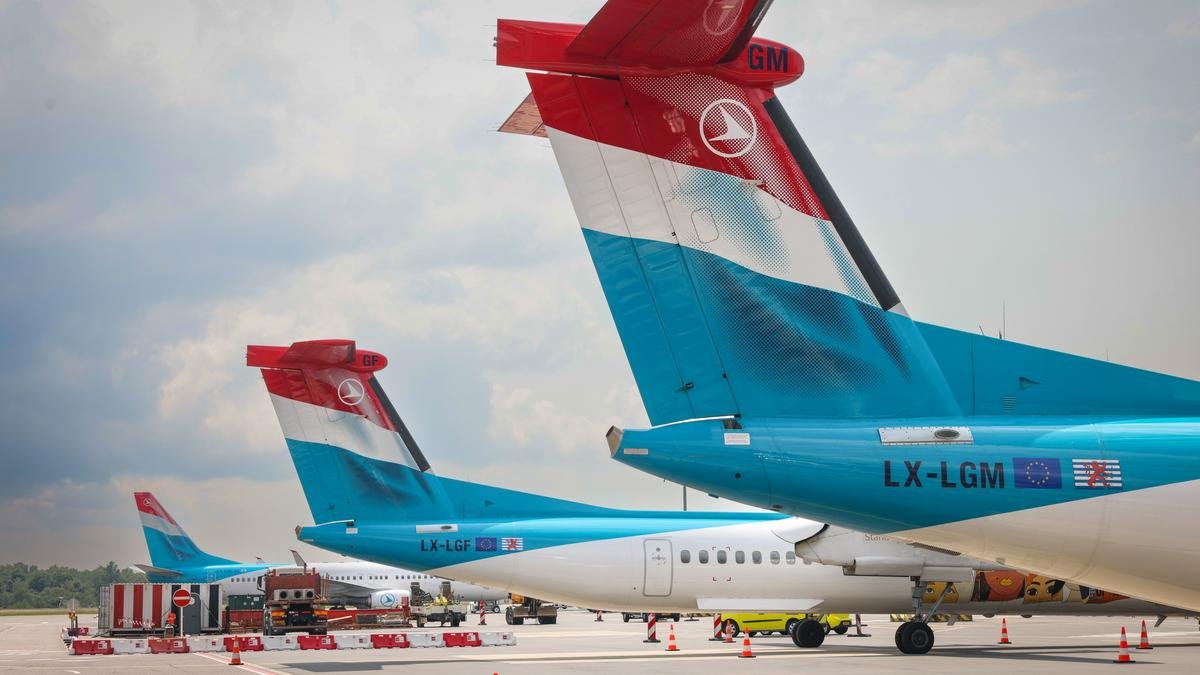
Booking flights, braving turbulence or wondering why in-flight food tastes so bland –flying comes with plenty of questions. But how many of the commonly held beliefs about air travel actually hold up?
Luxair, Luxembourg’s flag carrier, sheds some light on a few myths and explains what really happens behind the scenes.
The Tuesday-at-4-in-the-morning myth
A persistent rumour claims that flights are cheapest if booked on Tuesdays at 4:00. It’s been passed down in travel forums like gospel. But Luxair isn’t buying it.
“Ticket prices vary depending on many factors: time of year, school holidays and when the purchase is made,” the airline said, declining to confirm the late-night discount legend. Instead, Luxair highlights its last-minute offers as a reliable way to find good fares.
And what about using a VPN to trick pricing algorithms? No luck there either. While using a VPN “has no direct impact” on fares, the airline says browsing behaviour can influence prices. Simply put: if many users are looking at the same flight, seat availability drops – and prices can rise.
Fear of flying? There’s a seminar for that
Whether you tense up during takeoff or avoid flying altogether, Luxair says you’re not alone. If it’s a phobia, it’s best to inform the flight crew. You’ll receive appropriate support. “We can provide caring support and respond with special attention if needed,” Luxair explains.
For more serious cases, Luxair offers a weekend seminar, including sessions with a psychologist, a captain and cabin crew.
Participants learn coping techniques and then take a supervised round-trip flight with the same team. Held six times a year in three languages, the programme has a success rate of over 95%, according to Luxair.
“Furthermore, an independent study conducted by the University of Luxembourg shows that after their participation, over 90% of former participants continue to fly.”
Yes, airplane mode still matters
Mobile phones must still be set to airplane mode during flights, Luxair says, especially during takeoff and landing. Otherwise, they continuously search for a network, which can interfere with aircraft communication and navigation systems.
Wi-Fi on board? It exists, but is only activated after takeoff and deactivated before landing. The service includes either direct internet access via satellite or an Inflight Entertainment system with preloaded movies, games and news.
Why airplane food tastes … meh
Think the food is bland? You’re not imagining it. Reduced humidity and cabin pressure dull your taste buds, Luxair says. Add engine noise and distractions from other passengers, and flavours don’t stand much of a chance.
Chefs compensate with stronger spices and crunchy textures. These techniques can help restore some of the flavour lost at altitude.
Could you land a plane?
A viral survey once suggested nearly half of men – and a quarter of women – believe they could land a plane in an emergency. Luxair’s answer: don’t count on it.
“Piloting and landing an airliner is a complex task that requires years of theoretical and practical training,” the airline said. Pilots are trained for every imaginable scenario and operate under strict European rules.
Their workdays can stretch up to 15 hours, including pre-flight prep, time in the air and post-landing procedures. Minimum rest periods of 12 hours are enforced between flights.
As of 2026, Luxair will fly to more than 100 destinations. Whether you’re a nervous flyer or a self-declared aviation expert, you’ll still need to buckle in – and yes, switch your phone to airplane mode.
Travel from Luxembourg to these destinations by direct flight
(This article was originally published by Virgule. Machine translated by AI, with editing and adaptation by Kabir Agarwal.)
-

 Brand Stories3 weeks ago
Brand Stories3 weeks agoBloom Hotels: A Modern Vision of Hospitality Redefining Travel
-

 Brand Stories2 weeks ago
Brand Stories2 weeks agoCheQin.ai sets a new standard for hotel booking with its AI capabilities: empowering travellers to bargain, choose the best, and book with clarity.
-

 Destinations & Things To Do3 weeks ago
Destinations & Things To Do3 weeks agoUntouched Destinations: Stunning Hidden Gems You Must Visit
-

 Destinations & Things To Do2 weeks ago
Destinations & Things To Do2 weeks agoThis Hidden Beach in India Glows at Night-But Only in One Secret Season
-

 AI in Travel3 weeks ago
AI in Travel3 weeks agoAI Travel Revolution: Must-Have Guide to the Best Experience
-

 Brand Stories1 month ago
Brand Stories1 month agoVoice AI Startup ElevenLabs Plans to Add Hubs Around the World
-

 Brand Stories1 month ago
Brand Stories1 month agoHow Elon Musk’s rogue Grok chatbot became a cautionary AI tale
-

 Brand Stories3 weeks ago
Brand Stories3 weeks agoContactless Hospitality: Why Remote Management Technology Is Key to Seamless Guest Experiences
-

 Asia Travel Pulse1 month ago
Asia Travel Pulse1 month agoLooking For Adventure In Asia? Here Are 7 Epic Destinations You Need To Experience At Least Once – Zee News
-

 Brand Stories1 month ago
Brand Stories1 month agoChatGPT — the last of the great romantics



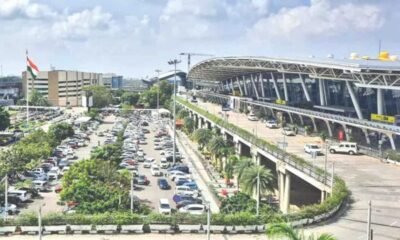









You must be logged in to post a comment Login